In 1982 an amateur diver looking for sponges off the coast of the city of Kaç in Turkey came across something spectacular. The wreck of a sunken ship with all the cargo on it at the end of the Bronze Age, in the 14th century BC
The wreck and the ship were called Uluburun , by the strip of land southeast of Kaç where it was found, the cape of the same name in Antalya province. The ship was 60 meters from the coast and at a maximum depth of 61 meters, and it was not until two years later, in 1984, that recovery work began.
It took 10 years (until 1994) to complete the recovery of the ship and its cargo, which can now be seen at the Bodrum Underwater Archeology Museum. Even so, the analysis of the pieces has not yet concluded to this day. Turkish and American divers made more than 22,000 dives spending more than 6,600 hours of diving in the works.
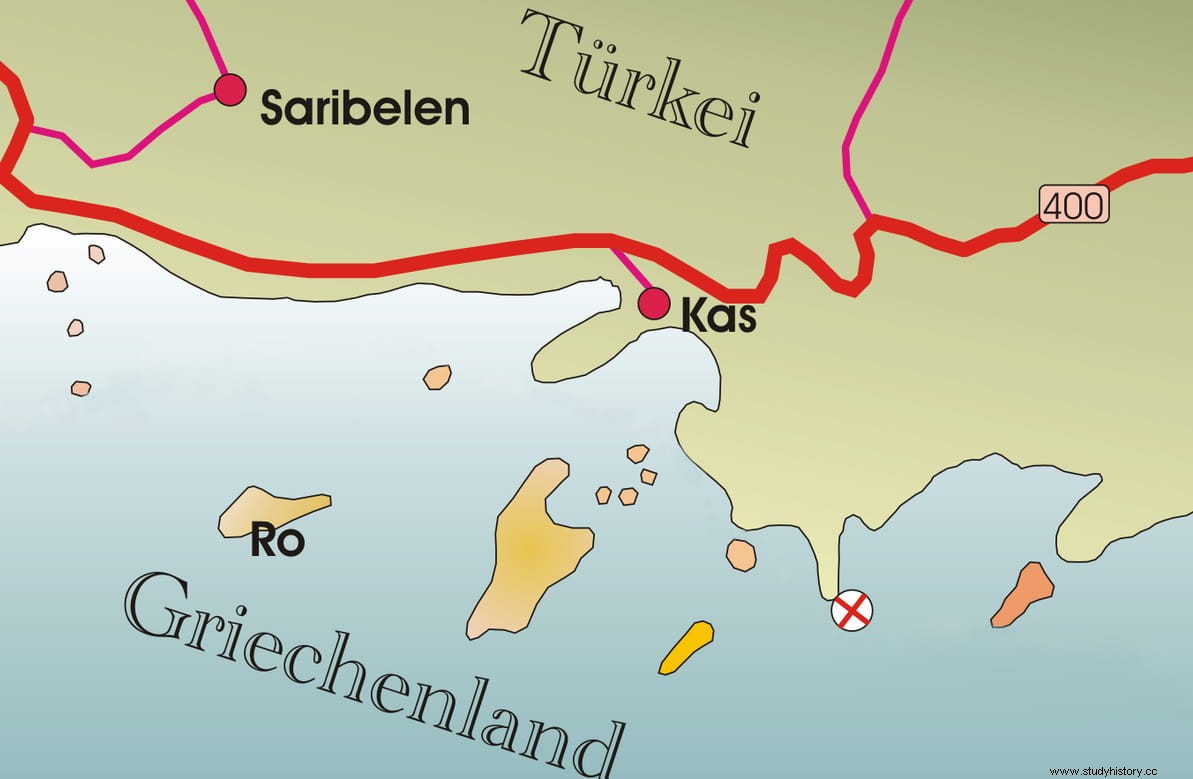
The ship's cargo consisted mainly of raw materials for trade. Items that until then were only known from ancient texts or paintings found in Egyptian tombs.
The first thing that was found were raw copper plates, 354 rectangular ingots with a total weight of 10 tons. Plus another 121 copper scrolls and oval ingots. 40 tin ingots that could come from the Tartessos mines.
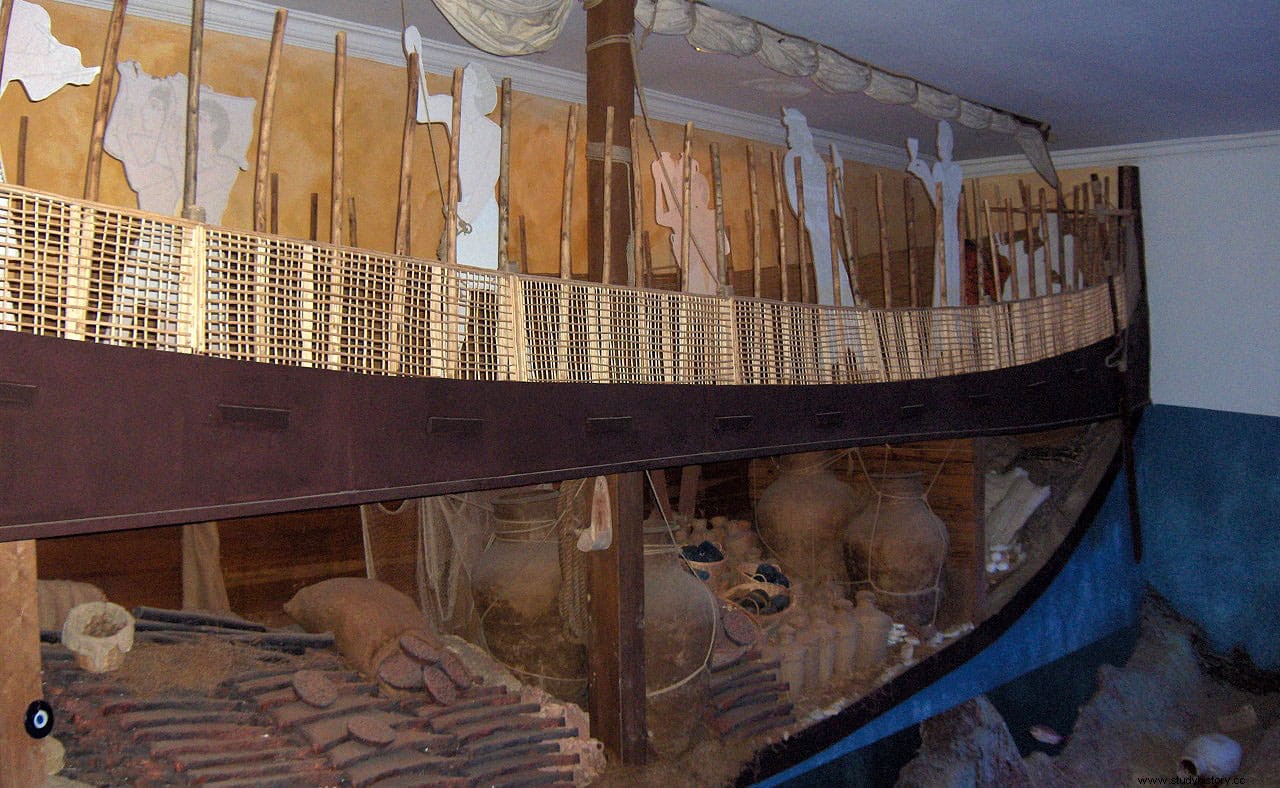
149 Canaanite jars, most containing olives or a substance known as pistacia resin (a kind of turpentine), traces of which have also been found in Canaanite jars from Tell el-Amarna in Egypt.
175 turquoise cobalt blue and lavender glass ingots, which are the first known intact glass ingots. Ebony wood logs, hippopotamus and elephant tusks, hippopotamus teeth, tortoise shells, ostrich eggs, Cypriot pottery, oil lamps, bronze and copper vessels, two duck-shaped ivory cosmetic boxes, two dozen of seashell rings, agates, quartz, gold and silver earrings and rings, amber, bronze carpenter's tools, 6 European-type spearheads similar to those found in the Alps, an Italic sword, a stone ceremonial ax , and a scarab of Nefertiti (dated to around 1360-1335 BC), indicating that the ship could not have sunk before Nefertiti's reign.
Analysis of the ship's wood yielded a date of around 1400 BC. for its construction. However, the wood that she transported corresponded to trees cut between 1316 and 1305 BC. indicating that this may be the date of the last voyage and sinking of it.
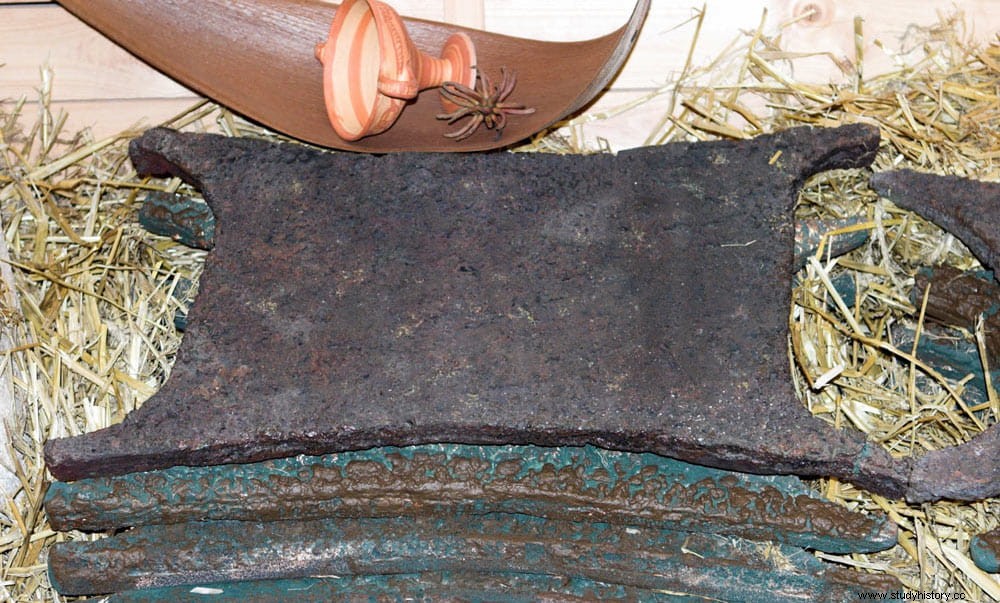
This is corroborated by the Mycenaean pottery found on board, which corresponds to that found at the level of the destruction of Miletus by the Hittite king Mursili II, which occurred in 1312 BC.
But where did the ship and its crew come from? Still today nothing is clear. Most researchers believe that she sank after calling at a Syrian-Palestinian port or in Cyprus to collect 6 tons of copper from the island's mines.
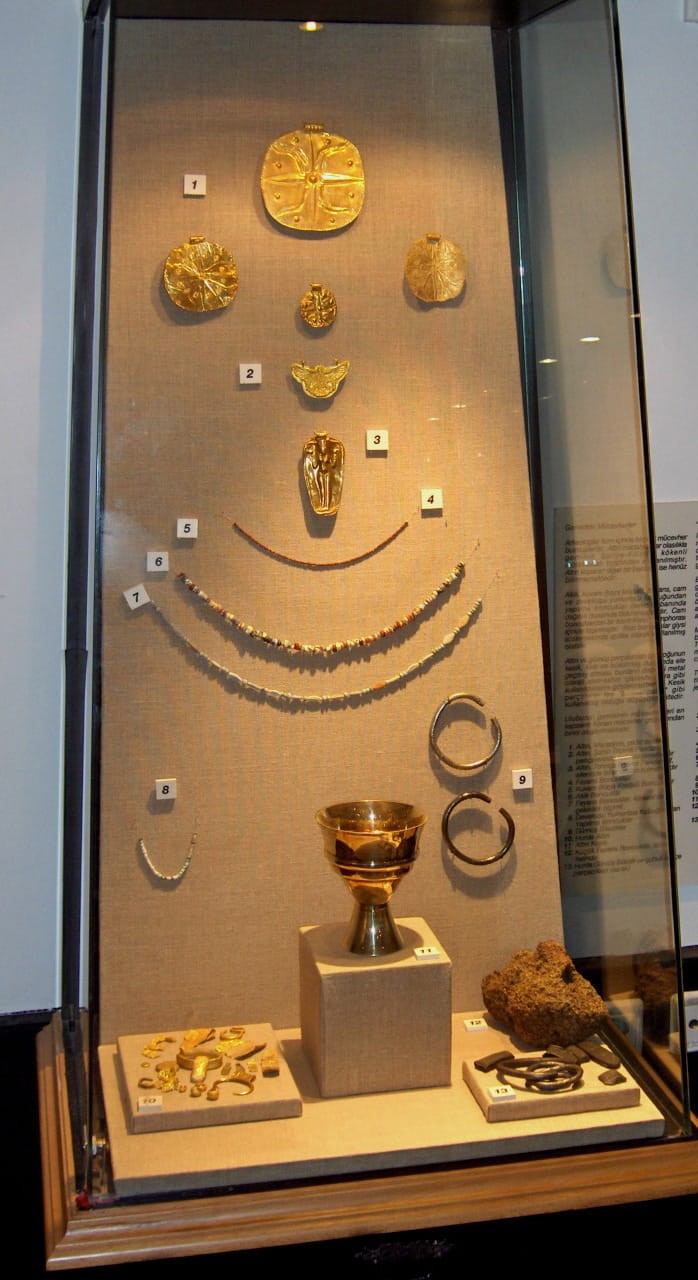
Before that, she must also have landed in Egypt and other places. The fact is that at the time of sinking she had on board more than 18,000 objects of diverse origin:Mycenaean, Cypriot, Canaanite, Kassite, Egyptian and Assyrian. It is believed that the final destination of her was one of the Mycenaean palaces of mainland Greece.
It measured between 15 and 16 meters in length, and was built with boards and keels of Lebanese cedar and oak, which may give a clue to its origin, as Lebanese cedar is native to the mountains of Lebanon, but also to southern Turkey. and central Cyprus.
She had on board 24 stone anchors, of an unusual type in the Aegean, it is not very well known whether as commercial products or to balance the ship's load.
Some researchers have suggested that Mycenaean officials were also traveling on board the ship, as a boxwood folding tablet with ivory hinges has been found that may have had wax surfaces for writing, which would make the cargo a kind of gift set. real.
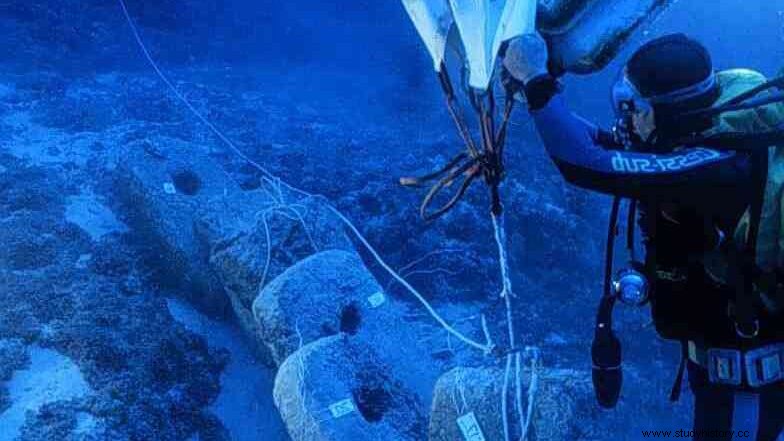
What is clear is that the provenance of the objects, which stretches geographically from northern Europe to Africa, and from Sicily and Sardinia in the west to Mesopotamia in the east, indicates that the Aegean during the Late Bronze Age was the center of a far-reaching international trade, perhaps based on the exchange of gifts between royalty from the Near East.
